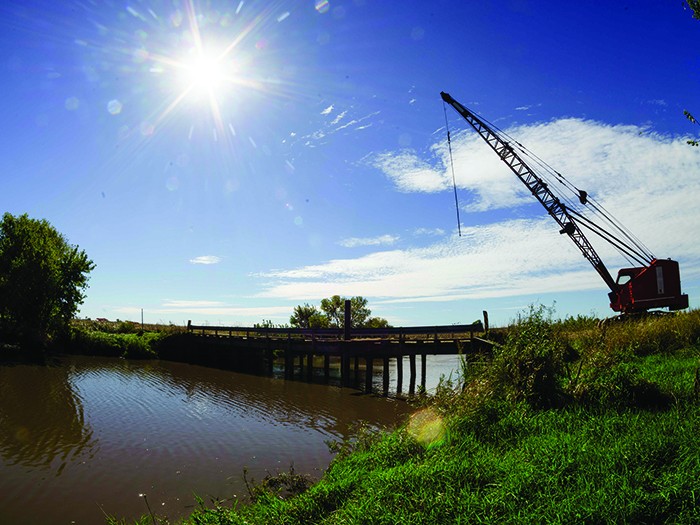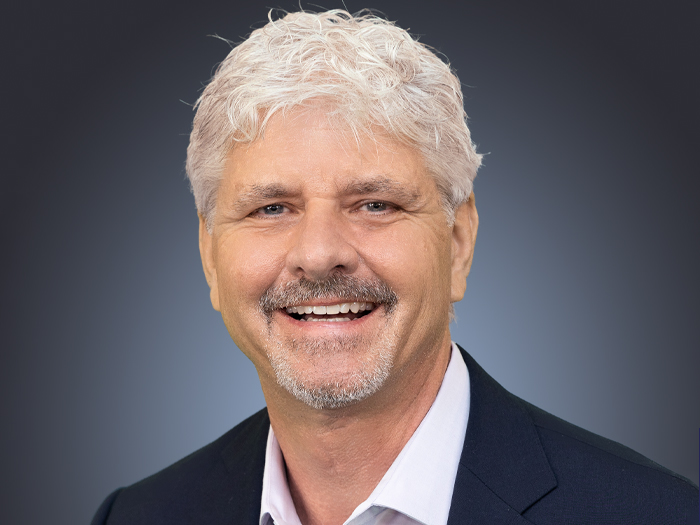P3 Model in Action
Speed and Savings

The dilemma of limited public sector budgets and crumbling infrastructure may have found a cure. The state of Pennsylvania took advantage of recent developments by surety bond underwriters to help secure an aggressive program to replace bridges around the state.
Surety bonds are required for work done by government entities, but this is a public-private partnership, so letters of credit were an option. But the sponsor, the state Department of Transportation (PennDOT), decided to use a surety bond program using new elements that included a fixed claims-determination process, and also liquidity provisions to ensure that work could continue during a claim.
The Rapid Bridge Replacement Project (RBR) is addressing 558 structurally deficient bridges across the commonwealth under a design-build-finance-maintain public-private partnership (P3) arrangement between PennDOT and Plenary Walsh Keystone Partners — the joint venture concessionaire, owned 80 percent by Plenary Group USA and 20 percent by Walsh Investors.
“This feature, which is more seen with contractor performance bonds in Europe, reduces the period of uncertainty in relation to a claim from a surety and for that reason it is assessed in a positive way from rating agencies and lenders.” — Michael R. Bonini, director, Public-Private Transportation Partnership Office, PennDOT.
Plenary Walsh is responsible for demolishing the existing bridges, maintaining traffic during construction, and then maintaining the new bridges for 25 years following construction. PennDOT will retain ownership of the bridges throughout.
It is the largest road project in Pennsylvania history.
Most of the bridges included in the program range from 40 to 75 feet in length and are located in rural regions on the state highway system.
The RBR is the first project to be completed under Pennsylvania’s 2012 P3-enabling legislation.
PennDOT said it chose the P3 structure to accelerate the replacement of the bridges and facilitate efficiencies in design and the construction of bridge components. This has resulted in a 20 percent cost savings over the life of the concession period, compared to PennDOT’s replacing the bridges itself, according to the agency.
Substantial completion of the project is expected on Dec. 31, 2017. Total cost is $1.119 billion; the design-build contract is for $899 million.
PennDOT said the batching of the projects will allow the bridges to be replaced and maintained at an average cost of $1.6 million each versus $2 million each if completed by PennDOT.
Commercial close occurred on Jan. 9, financial was March 18. Construction on the first bridges began this summer, and the bridges will be completed in batches. Substantial completion of the project is expected on Dec. 31, 2017. Total cost is $1.119 billion; the design-build contract is for $899 million.
“The key feature of the performance bond used for the Rapid Bridge Replacement project that is different from more traditional ones is that it spells out a specific process about accepting claims, dispute resolution and how long such a process can take,” said Michael R. Bonini, director of the Public-Private Transportation Partnership Office at PennDOT.
“This feature, which is more seen with contractor performance bonds in Europe, reduces the period of uncertainty in relation to a claim from a surety and for that reason it is assessed in a positive way from rating agencies and lenders.
“For PennDOT, this means a more streamlined process in relation to timely completion of the project and access to this mechanism if the contract is terminated and the design-build contract is assigned to PennDOT.”
New Delivery Method
Surety bonding is “in a state of rapid development,” said Michael Bond, head of surety for Zurich, which was a participating surety in the RBR. “This is a new delivery method in the U.S.
“The enabling legislation for P3 programs does not necessarily specify surety as opposed to letters of credit or other forms of performance security. Letters of credit have been used worldwide to provide liquidity to a project, but they don’t protect subcontractors.
“Performance bonds also cover payments for labor and materials. That ensures workers and suppliers are covered.”
“The Pennsylvania program is a very creative example of how the public works and surety industries are responding to current needs.” Michael Bond, head of surety, Zurich
Bond said that the innovations in the RBR program address some of the prevailing concerns about surety, namely the uncertainty of the claims process, and the possibility of untimely payments, that could cause a liquidity problem for the project.
“The Pennsylvania program is a very creative example of how the public works and surety industries are responding to current needs,” said Bond.
To be clear, the surety bonds are different from the public-works bonds or funding bonds that are issued by the state authority and actually pay for the project.
The surety bonds provide performance security that the concessionaire, Plenary Walsh in this case, will complete the project satisfactorily. If there is a default, there would be a call on the bond and the surety would step in to work with the authority and the contractors to complete the project.
“What is new and different is that in a traditional public-works project the government is the owner and counterparty to the contractor,” said Bond. “In the P3 model, the counterparty is a private entity created to execute the project.”
He added that while such a special-purpose entity has some advantages over traditional public-works operations, it also has some proscriptions. Notably, the project is funded on a limited-recourse basis, so if there are cost escalations or unforeseen expenses, the concessionaire cannot dip into the government pockets to cover. There is some contingency, but it is limited.
“This is the next level in construction [risk management],” said Doug Wheeler, regional managing director for construction services at Aon Infrastructure Solutions. Aon was the broker for the contractor.
A European Model
“This alternative project delivery model came out of Europe and into Canada, then into the U.S. There is more legwork up-front, but there are dozens of projects already on board. Pennsylvania is a big proponent, New Jersey is almost there [with enabling legislation], but Governor Christie vetoed the most recent proposal. In New York, there has been a push.”
This is a very exciting time in public works and surety, said Aon’s Grace Drinker, senior analyst of infrastructure.
She stressed that even though the P3 process is different than the traditional design-bid-build approach, “there are still checks and balances aplenty in P3. There have been P3 contracts cancelled because of oversight and scrutiny.
“There is no risk to public safety or the public purse in the P3 process,” Drinker said. “What it does is bring operating efficiency to infrastructure.”
With the P3 approach, she said, “it is possible to have a higher initial cost, but the operating efficiency over the 30-year lifecycle of a project is a net savings. There is a real value for money in this.”
Drinker added that “contractors prefer to use surety capacity to letters of credit capacity to meet lender requirements on projects.”
Wheeler concurred that contractor preference is a big piece of the puzzle. “Surety is more efficient for the construction industry.” He added that capacity in surety is finite, but not a concern.
“Bundling the bridges allows them to be replaced faster and cheaper,” said Steve T. Park, senior associate with Ballard Spahr in Philadelphia, the bond counsel to PennDOT.
“The typical design-bid-build process would have taken longer. They selected bridges that could be easily bundled, designs that were similar, so they could fix the most in one program.”
There was equal diligence on the other side of the table.
“We spent a lot of time de-risking the program,” said Sarah Roberts, president of Intech Risk Management, insurance advisers to the concessionaire.
“We spent a lot of time de-risking the program.” — Sarah Roberts, president, Intech Risk Management
“When people hear 558 bridges, the initial perception is that they were not certain it could succeed. But the project is actually easier to manage with a lot of bridges than it would be for a single project of the same size.
“With a single project, if there is a delay, the whole timeline is thrown off. With so many bridges, it is possible to swap out one for another and work around delays to keep the whole project on schedule.”
She is sanguine about the growth potential for P3 projects in the U.S., at least in the long term.
“I don’t think we are there yet in P3 in the U.S.; there is still a lot of coming of age to do. In this case, the P3 model had a direct benefit to the owner, PennDOT, and indirectly to the taxpayers of the state.”
Lynn Schubert, president of the Surety & Fidelity Association of America, confirmed that P3s, and most public construction in Europe are protected by letters of credit.
“In the U.S., our public construction prefers performance bonds for completion and payment. But the concern of the ratings agencies is the speed with which surety bonds are called upon.
“In the Pennsylvania [project], the contracts include a quick-resolution process. It is a little extra piece, but it is very exciting.”











